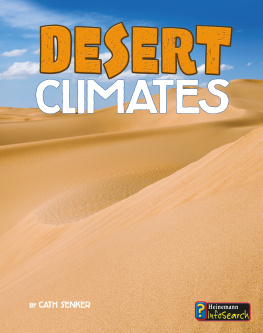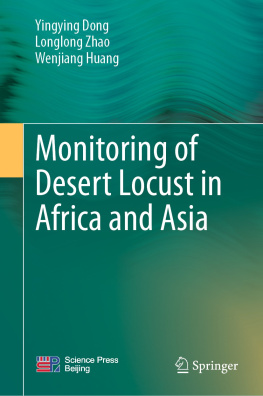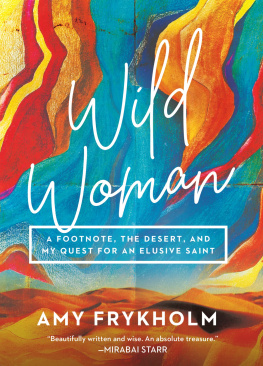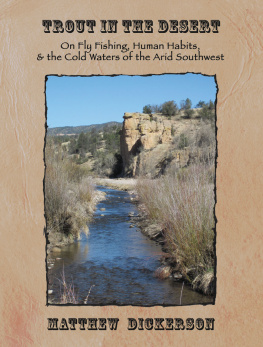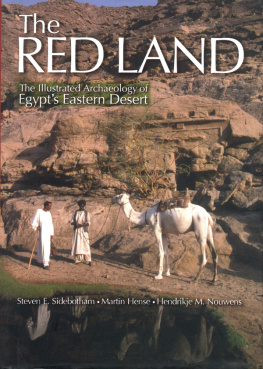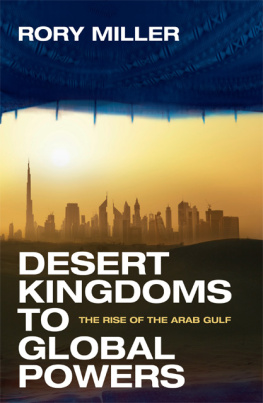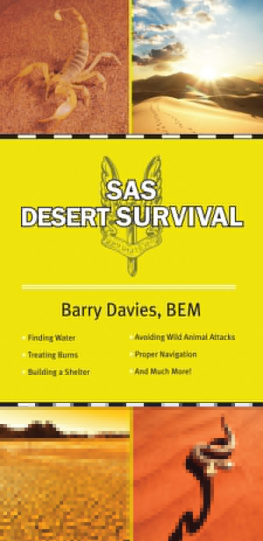
Revolutions in the Desert
Revolutions in the Desert investigates the development of pastoral nomadism in the arid regions of the ancient Near East, challenging the prevailing notion that such societies left few remains appropriate for analytic study. Few prior studies have approached the deeper past of desert nomadic societies, which have been primarily recognized only as a complement to the study of sedentary agricultural societies in the region. Based on decades of archaeological fieldwork in the Negev of southern Israel, both excavations and surveys, and integrating materials from adjacent regions, Revolutions in the Desert offers a deeper and more dynamic view of the rise of herding societies beyond the settled zone.
Rosen offers the first archaeological analysis of the rise of herding in the desert, from the first introduction of domestic goats and sheep into the arid zones, more than eight millennia ago, to the evolution of more-recent Bedouin societies. The adoption of domestic herds by hunter-gatherer societies, contemporary with and peripheral to the first farming settlements, revolutionized all aspects of desert life, including subsistence, trade, cult, social organization, and ecology. Inviting processual comparison to the agricultural revolution and the secondary spread of domestication beyond the Near East, this volume traces the evolution of nomadic societies in the archaeological record and examines their ecological, economic, and social adaptations to the deserts of the Southern Levant. With maps and illustrations from the authors own collection, Revolutions in the Desert is a thoughtful and engaging approach to the archaeology of desert nomadic societies.
Steven A Rosen holds the Canada Chair in Near Eastern Archaeology at Ben-Gurion University of the Negev. He has published five previous books, along with over 150 professional papers, and he is also a member of the scientific board of Palorient, a member of the board of directors of the Israel Prehistoric Society, and sits on the Archaeological Council of Israel. He has conducted fieldwork in Israel and Turkey, including a number of excavations and surveys in the Negev region.
First published 2017
by Routledge
711 Third Avenue, New York, NY 10017
and by Routledge
2 Park Square, Milton Park, Abingdon, Oxon OX14 4RN
Routledge is an imprint of the Taylor & Francis Group, an informa business
2017 Steven A Rosen
The right of Steven A Rosen to be identified as author of this work has been asserted by him in accordance with sections 77 and 78 of the Copyright, Designs and Patents Act 1988.
All rights reserved. No part of this book may be reprinted or reproduced or utilised in any form or by any electronic, mechanical, or other means, now known or hereafter invented, including photocopying and recording, or in any information storage or retrieval system, without permission in writing from the publishers.
Trademark notice: Product or corporate names may be trademarks or registered trademarks, and are used only for identification and explanation without intent to infringe.
Library of Congress Cataloging in Publication Data
Names: Rosen, Steven A, author.
Title: Revolutions in the desert : the rise of mobile pastoralism in the Negev
and the arid zones of the Southern Levant / Steven A Rosen.
Description: First edition. | New York, NY : Routledge, [2017] |
Includes bibliographical references and index.
Identifiers: LCCN 2016046338 | ISBN 9781629585437 (hardback) |
ISBN 9781629585444 (pbk.)
Subjects: LCSH: Negev (Israel) | IsraelAntiquities. | Antiquities,
PrehistoricIsrael. | Excavations (Archaeology)Israel. | Pastoral
systemsIsraelHistoryTo 1500. | Bronze ageIsraelNegev. |
Bronze ageMiddle East.
Classification: LCC DS111 .R585 2017 | DDC 933/.4901dc23
LC record available at https://lccn.loc.gov/2016046338
ISBN: 978-1-62958-543-7 (hbk)
ISBN: 978-1-62958-544-4 (pbk)
ISBN: 978-1-315-39994-2 (ebk)
Typeset in Bembo
by Apex CoVantage, LLC
To my grandparents, Hyman and Fanny Rosen, and Sarah Raskin I would like to think they would have been proud to see what I have done after growing up.
Contents
I began this study while a fellow at the Cotsen Institute of Archaeology at UCLA, on a sabbatical from Ben-Gurion University in 19992000; in the event I felt more fieldwork and more analysis were needed and I put the synthesis aside, completing it only while on sabbatical at the Department of Anthropology at the University of Texas at Austin in 2015. My years as an honorary professor at the Institute of Archaeology at University College London and a half sabbatical at the Department of Anthropology at the University of California at San Diego broadened my knowledge and experience and I am grateful to my colleagues and friends in all those institutions: Guillermo Algaze, Liz Carter, Alan Covey, Andy Garrard, Tom Levy, Louise Martin, Rich Macphail, Chip Stanish, Willeke Wendrich, and Karen Wright, who discussed many aspects of this work with me and were always so open with their knowledge and ideas. Karl W. Butzer, may his memory be blessed, also stimulated my thinking. My good friends and colleagues from Israel, Yoav Avni, Noa Avni, Ofer-Bar-Yosef, Danny Bar-Yosef Mayer, Peter Fabian, Isaac Gilead, Haim Goldfus, Avi Gopher, Nigel Goring-Morris, Mayer Gruber, Liora K. Horwitz, Serge-Yan Landau, Gunnar Lehmann, Haim Marantz, Ofer Marder, Avinoam Meir, Yosef Plakht, and Yuval Yekutieli, have offered feedback and encouragement on different aspects of this work over the past years. I owe a special debt of gratitude to my friends and colleagues from the Severtsov Institute of Ecology and Evolution of the Russian Academy of Sciences, who initiated the Negev Holocene Ecology Project and opened my eyes to the importance of rock shelters in the Negev; I thank Arkady Savinetsky, Nina Kisseleva, Bulat Khassanov, and Anna Babenki. My friend and one-time publisher, Mitch Allen, has always improved my work. Hans Barnard and Benjamin Saidel, both once doctoral students of mine, were kind enough to read an earlier draft of the manuscript and make important comments. My more recent doctoral students, Dr. Ariel Meraiot taught me invaluable lessons about recent Bedouin history, and Dr. Davida Degen-Eisenberg taught me everything I might know about rock art in the Negev. Arlene Rosen has continuously provided support, knowledge, and encouragement. Patrice Kaminsky and Helena Sokolskaya of Ben-Gurion University helped as always with the illustrations and graphics. Yvgeny Ostrovsky and Alter Fogel, also of Ben-Gurion University, photographed some of the artifacts. Research over the years has been supported by grants from the Wenner Gren Foundation for Anthropological Research, the National Geographic Society, the Israel Science Foundation (especially # 258/10), the Israel Ministry of Science, and Ben-Gurion University of the Negev. I will ever be grateful to all those students, both my own and those who worked on my excavations as volunteers, for their constant hard work and enthusiasm; I hope that they have felt that their experiences have been worth their efforts.
As always, my wife Arlene, and my children, Yaniv and Boaz, were my true inspirations.
Steve Rosen
December 2015


